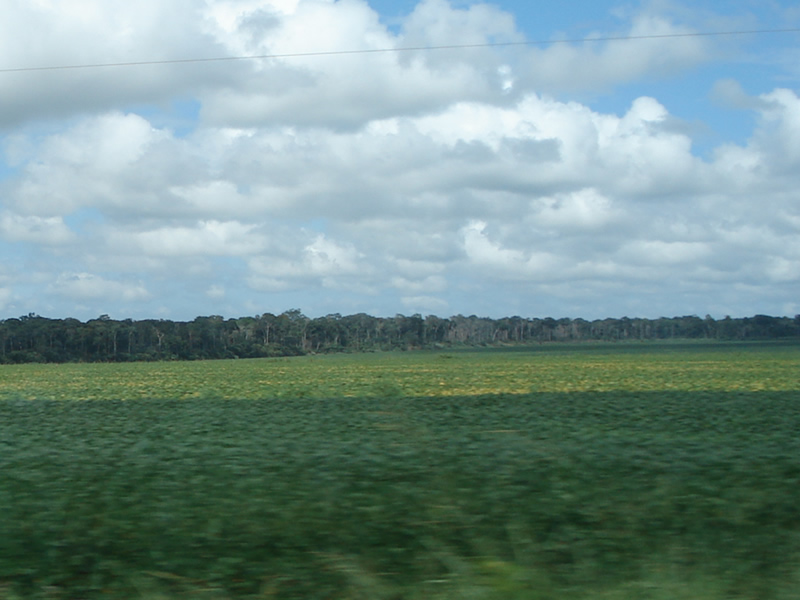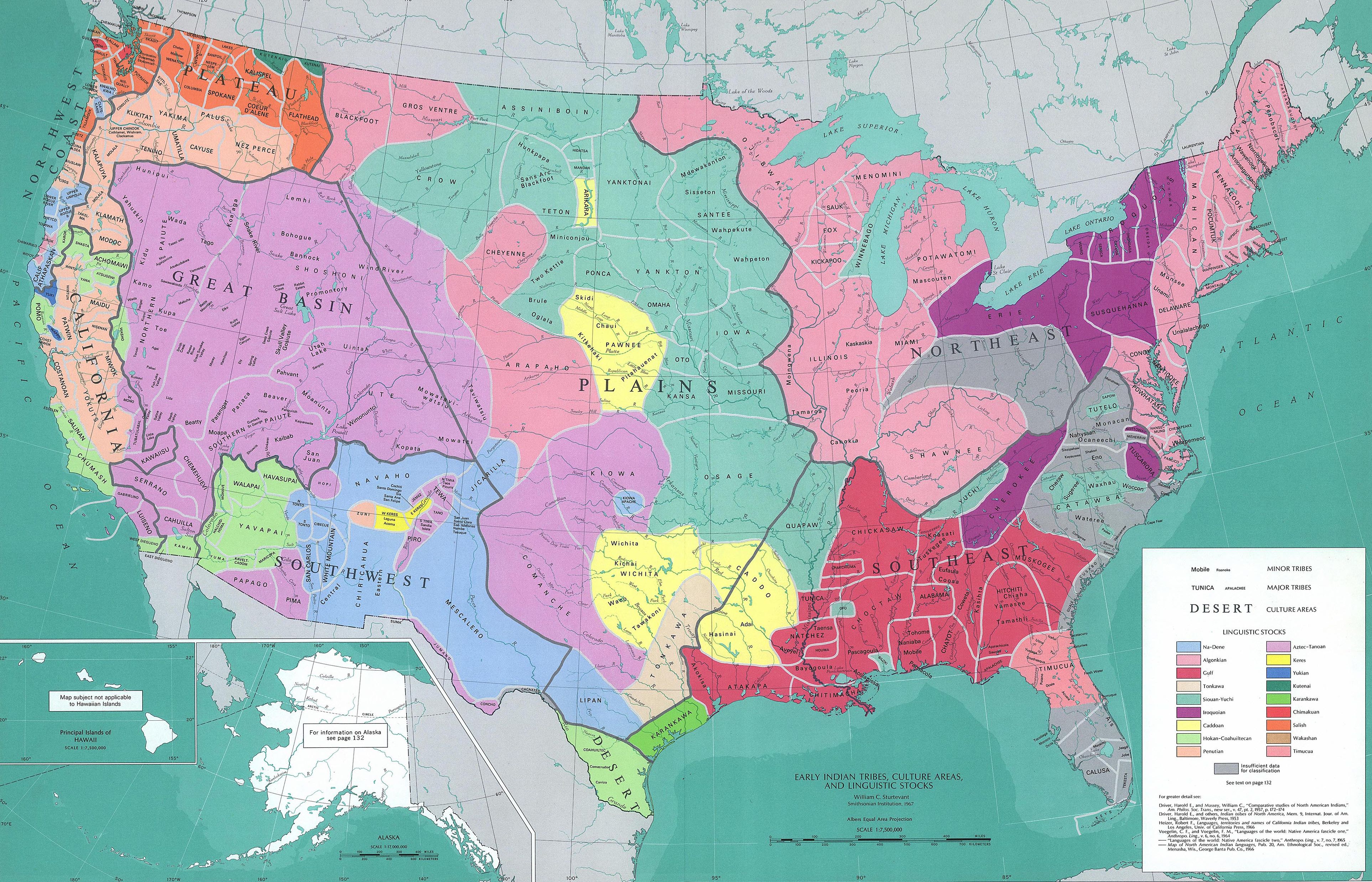|
Akuntsu
The Akuntsu (also known as Akunt'su or Akunsu) are an indigenous people of Rondônia, Brazil. Their land is part of the Rio Omerê Indigenous Territory, a small indigenous territory which is also inhabited by a group of Kanoê. The Akuntsu were victims of a massacre perpetrated by Brazilian cattle ranchers in the 1980s and currently number just three individuals. It is unlikely that the Akuntsu language or culture will survive after their deaths, leading several observers to describe them as victims of genocide. Culture The Akuntsu are primarily hunter-gatherers, but supplement their diet with some swidden agriculture. Game is particularly abundant in their reserve because it acts as a refuge for animals whose habitats have been destroyed by deforestation in the surrounding area. The Akuntsu have a typical material culture for the region and practice various shamanic rituals. The Akuntsu language is spoken only by members of the tribe and not fully understood by any outsider ... [...More Info...] [...Related Items...] OR: [Wikipedia] [Google] [Baidu] |
Akuntsu Language
Akuntsu is a Tupian language of Brazil. Peaceful contact with the Akuntsu people was only made in 1995; they had been massacred by cattle ranchers in the 1980s. It is considered unlikely that the Akuntsu language or culture will survive following the deaths of the tribe's remaining members. For this reason several observers have described the tribe as the victims of genocide. The neighbouring Kanoê have been similarly reduced in number through contact with settlers, as were the people of a man recently encountered living alone in the Igarapé Omerê reserve who was apparently the sole survivor of his tribe, referred to as the Man of the Hole. Classification Akuntsu is a Tupian The Tupi or Tupian language family comprises some 70 languages spoken in South America, of which the best known are Tupi proper and Guarani. Homeland and ''urheimat'' Rodrigues (2007) considers the Proto-Tupian urheimat to be somewhere between ... language belonging to the Tupari subfamily. It i ... [...More Info...] [...Related Items...] OR: [Wikipedia] [Google] [Baidu] |
Rondônia
Rondônia () is one of the 26 states of Brazil, located in the northern subdivision of the country (central-western part). It is bordered by Acre (state), Acre in the west, Amazonas, Brazil, Amazonas in the north, Mato Grosso in the east, and Bolivia in the south. Rondônia has a population of 1,815,000 as of 2021. It is the fifth least populated state. Its capital and largest city is Porto Velho, bathed by the Madeira River. The state was named after Cândido Rondon, who explored the north of the country during the 1910s. The state, which is home to c. 0.7% of the Brazilian population, is responsible for c. 0.3% of the Brazilian GDP. The state has 52 municipalities and occupies an area of 237,590.547 Square kilometre, km2, equivalent to the territory of Romania and almost five times larger than Croatia. In addition to this, there are other important cities such as Ariquemes, Cacoal, Guajará-Mirim, Ji-Paraná, Rolim de Moura and Vilhena. Geography Rondonia used to be home to ... [...More Info...] [...Related Items...] OR: [Wikipedia] [Google] [Baidu] |
Rio Omerê Indigenous Territory
The Rio Omerê Indigenous Territory is an indigenous territory for isolated indigenous peoples in Rondônia, Brazil. The territory consists of 26,000 hectares of forest on the Omerê River and is home to the Kanoê The Kanoê (also as the Canoe, Kapixaná and Kapixanã) are an indigenous people of southern Rondônia, Brazil, near the Bolivian border. There are two major groups of Kanoê: one residing in the region of the Guaporé River and another in the R ... and Akuntsu tribes. Both tribes were the victims of severe massacres by cattle ranchers in the 1970s and 1980s. , the Akuntsu number just four individuals and the Rio Omerê Kanoê five. The two tribes are separate peoples speaking mutually unintelligible languages, but are linked by marriage. Several loggers and cattle ranchers also remain in the territory despite attempts to eject them and continue to pose a threat to its indigenous inhabitants. References Geography of Rondônia Indigenous topics of the Amazon ... [...More Info...] [...Related Items...] OR: [Wikipedia] [Google] [Baidu] |
Tuparí Languages
The Tuparí languages of Brazil form a branch of the Tupian language family. Internal classification The Tupari languages are:Nikulin, Andrey; Fernando O. de Carvalho. 2019Estudos diacrônicos de línguas indígenas brasileiras: um panorama ''Macabéa – Revista Eletrônica do Netlli'', v. 8, n. 2 (2019), p. 255-305.PDF * Tupari ** Makuráp ** Nuclear Tupari *** Akuntsu– Mekéns (Sakirabiá, Waratégaya) *** Tuparí, Kepkiriwát, Wayoró None are spoken by more than a few hundred people. A more recent internal classification by Nikulin & Andrade (2020) is given below:Nikulin, Andrey; Rafael Andrade. 2020The rise and fall of approximants in the Tuparian languages ''Journal of Language Relationship'' 18/4 (2020), pp. 284–319. *Tuparian **'' Makurap'' **Core Tuparian ***Wayoró–Tuparí ****'' Wayoró'' ****'' Tuparí'' ***Corumbiara ****'' Mekéns'' ****'' Akuntsú'' Varieties Below is a list of Tupari language varieties listed by Loukotka (1968), including nam ... [...More Info...] [...Related Items...] OR: [Wikipedia] [Google] [Baidu] |
Indigenous Peoples In Brazil
Indigenous peoples in Brazil or Native Brazilians () are the peoples who lived in Brazil before European contact around 1500 and their descendants. Indigenous peoples of the Americas, Indigenous peoples once comprised an estimated 2,000 district tribes and nations inhabiting what is now Brazil. The 2010 Brazil census recorded 305 ethnic groups of Indigenous people who spoke 274 Indigenous languages of the Americas, Indigenous languages; however, almost 77% speak Portuguese language, Portuguese. Historically, many Indigenous peoples of Brazil were semi-nomadic and combined hunting, fishing, and hunter-gatherer, gathering with migratory agriculture. Many tribes were massacred by European settlers, and others assimilated into the growing European population Brazilians, Brazilian population. The Indigenous population was decimated by European diseases, declining from a pre-Columbian high of 2 million to 3 million to approximately 300,000 by 1997, distributed among 200 tribes. Accor ... [...More Info...] [...Related Items...] OR: [Wikipedia] [Google] [Baidu] |
Survival International
Survival International is a human rights organisation formed in 1969, a London based charity that campaigns for the collective rights of Indigenous, tribal and uncontacted peoples. The organisation's campaigns generally focus on tribal peoples' desires to keep their ancestral lands. Survival International calls these peoples socially vulnerable, and aims to eradicate what it calls 'misconceptions' used to justify violations of human rights. It also aims to publicize harm caused to tribes by corporations and governments. Survival International states that it aims to help foster tribal people's self-determination. Survival International is in association with the United Nations Department of Global Communications and in consultative status with the UN Economic and Social Council. To ensure freedom of action, Survival accepts no government funding. It is a founding member and a signatory organization of the ''Accountability Charter'' ( INGO Accountability Charter). Survival ha ... [...More Info...] [...Related Items...] OR: [Wikipedia] [Google] [Baidu] |
Indigenous Peoples Of The Amazon
Historically, classification of the Indigenous peoples of the Americas is based upon cultural regions, geography, and linguistics. Anthropologists have named various cultural regions, with fluid boundaries, that are generally agreed upon with some variation. These cultural regions are broadly based upon the locations of the Indigenous peoples of the Americas from early European and African contact beginning in the late 15th century. When Indigenous peoples have been Indian removal, forcibly removed by nation-states, they retain their original geographic classification. Some groups span multiple cultural regions. Peoples can also be classified by genetics, technology, and social structure. Canada, Greenland, United States, and northern Mexico In the United States and Canada, Ethnography, ethnographers commonly classify Indigenous peoples into ten geographical regions with shared culture, cultural traits, called cultural areas. Greenland is part of the Arctic region. Some scholar ... [...More Info...] [...Related Items...] OR: [Wikipedia] [Google] [Baidu] |
Man Of The Hole
The Man of the Hole ( – ), or the Tanaru Indian, was an Indigenous person who lived alone in the Amazon rainforest in the Brazilian state of Rondônia. He was the sole inhabitant of the Tanaru Indigenous Territory, a protected Indigenous territory demarcated by the Brazilian government in 2007. It is not known what language the Man of the Hole spoke, what his people called themselves, or what his name was, although it may have been Tupian. He was the last surviving member of his people following their genocide by Brazilian settlers in the 1970s–1990s and chose to remain isolated until his death in 2022. Living primarily by hunting and gathering and moving frequently, he left behind a deep hole of unknown purpose in each of his former homes, giving rise to his nickname. After surviving a further attack by armed ranchers in 2009, he was found dead in his home in August 2022. Surviving genocide The Man of the Hole was not a voluntary recluse; he was forced to live alone ... [...More Info...] [...Related Items...] OR: [Wikipedia] [Google] [Baidu] |
Fundação Nacional Dos Povos Indígenas
The ''Fundação Nacional dos Povos Indígenas'' (, ) or FUNAI is a Brazilian governmental protection agency for indigenous peoples in Brazil, Amerindian interests and their culture. Original founding as Indian Protection Service In 1910, the Indian Protection Service (Serviço de Proteção ao Índio), or the SPI, was founded under the leadership of Brazilian Marshal Cândido Rondon, Candido Rondon. Rondon created the foundation's motto: "Die if necessary, but never kill." Drawing from his Positivism, Rondon led the SPI with the belief that the native Indians should be allowed to develop at their own pace. With state assistance and protection, Indians would eventually integrate into modern society. The SPI then began its mission to "pacify" Indian communities by setting up posts in their territories to foster communication and protection. Efforts were initially met by opposition and hostility from Indian groups; there were reports of SPI agents being attacked and shot by a ... [...More Info...] [...Related Items...] OR: [Wikipedia] [Google] [Baidu] |
Igarapé Omerê Indigenous Territory
Igarapé is a Brazilian municipality located in the state of Minas Gerais. The city belongs to the mesoregion Metropolitana de Belo Horizonte and to the microregion of Belo Horizonte. In 2020 the estimated population was 43,817. See also * List of municipalities in Minas Gerais This is a list of the municipalities in the States of Brazil, state of Minas Gerais, Minas Gerais (MG), located in the Southeast Region, Brazil, Southeast Region of Brazil. Minas Gerais is divided into 853 Municipalities of Brazil, municipalities, ... References Municipalities in Minas Gerais {{MinasGerais-geo-stub ... [...More Info...] [...Related Items...] OR: [Wikipedia] [Google] [Baidu] |



